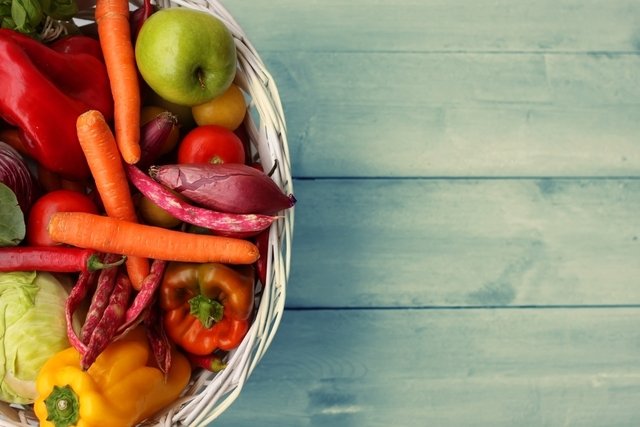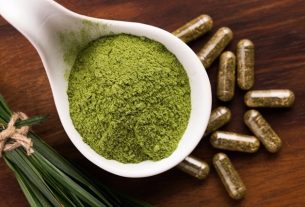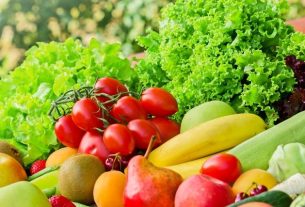Fructose intolerance is the difficulty in absorbing or digesting foods rich in fructose, which can cause some symptoms, such as excess gas, abdominal pain, nausea, diarrhea and bloating.
Fructose is a type of sugar naturally found in fruits, honey and vegetables. Furthermore, some industrialized products, such as soft drinks, sauces and biscuits, also contain fructose in the form of fructose syrup, sorbitol and sucrose. See all foods high in fructose.
The diagnosis of fructose intolerance must be made by a doctor and treatment consists of reducing intake or excluding foods rich in this type of sugar from the diet. However, as the type and degree of fructose intolerance varies from person to person, it is advised to consult a nutritionist to treat the condition and maintain a healthy and varied diet.

Main symptoms
The main symptoms of fructose intolerance are:
- Nausea and vomiting;
- Excess gases;
- Stomach ache;
- Diarrhea or constipation;
- Swollen belly;
- Lack of appetite;
- Irritability;
- Dizziness.
In children, the signs and symptoms of fructose intolerance are vomiting, diarrhea, swollen belly, yellowish skin and/or eyes and difficulties in growth and development.
As undigested fructose can accumulate in the body, regular and continuous consumption of foods rich in this sugar can cause seizures, coma and organ failure.
What is fructose?
Fructose is a type of sugar found naturally in fruits, honey, agave, and some vegetables and legumes, foods that are normally not harmful to your health.
However, fructose can also be found, in the form of fructose syrup, sorbitol, sucrose, in industrialized products such as cakes, chocolates, sauces and soft drinks, foods that are related to the emergence of obesity, diabetes and high blood pressure, for example .
Types of fructose intolerance
Fructose intolerance can be classified into food intolerance to fructose and hereditary fructose intolerance.
1. Fructose food intolerance
This type of intolerance, also called fructose malabsorption, occurs when intestinal cells cannot adequately absorb fructose. Thus, the intestine ferments part of the unabsorbed fructose, causing symptoms such as excess gas, diarrhea, abdominal pain and bloated belly.
Food intolerance to fructose can appear at any stage of life and can be caused by stress or intestinal problems, such as irritable bowel syndrome or dysbiosis, an imbalance in the intestinal microbiota that can cause inflammation and hinder the absorption of nutrients. Understand better about dysbiosis.
2. Hereditary fructose intolerance
Hereditary fructose intolerance is a rare genetic disease caused by changes in aldolase B, which is the enzyme responsible for fructose metabolism. This type of intolerance can appear in the first 6 months of life, which is the phase where the baby begins to eat other foods such as baby food and juices or fruits.
People with this type of intolerance do not absorb fructose and may experience symptoms such as abdominal pain, nausea and vomiting. Furthermore, regular consumption of foods rich in fructose can also cause more serious problems, such as kidney failure, liver fibrosis and changes in the nervous system.
Possible causes
Possible causes of fructose intolerance are:
-
Dysbiosis;
-
Gut problems such as irritable bowel syndrome, celiac disease or colitis;
-
Ingestion of processed foods.
Hereditary fructose intolerance is a genetic disease that is transmitted from parents to children.
How to confirm the diagnosis
The diagnosis of fructose intolerance must be made by a general practitioner or gastroenterologist, through evaluation of the signs and symptoms presented and the person’s diet.
In addition, the doctor may also order genetic tests, urine or stool tests. You can also request the breath hydrogen test, which is an exam that measures, through breathing, the amount of methane and hydrogen exhaled after drinking a liquid containing fructose.
How the treatment is carried out
The treatment of fructose intolerance must be indicated by a doctor or nutritionist, varying depending on the type and degree of this condition and basically consists of removing foods rich in fructose from the diet.
Foods that should be avoided
There are foods that contain high amounts of fructose and that should be reduced or excluded from the diet according to the person’s type and degree of tolerance:
Some foods such as peas, lentils, beans, chickpeas, white beans, corn and soy can cause gas and, therefore, their consumption depends on each person’s tolerance.
Allowed foods
Some of the foods that do not contain fructose and can be consumed are:
- dairy products, such as milk, butter, cheese and natural yogurt;
- sweeteners, such as stevia, sucralose, maltose and aspartame;
- Oilseeds, such as walnuts, peanuts, chestnuts, hazelnuts, chia, sesame and linseed;
- Natural seasonings, such as salt, vinegar, aromatic herbs and spices;
- Cereals, such as oats, barley, rye, bread and rice, as long as they do not contain fructose, sucrose, sorbitol, honey, molasses or corn syrup;
- proteins, such as chicken, fish, beef and eggs;
- Bebidas, such as water, teas and coffees.
As fructose intolerance varies depending on the type and degree of this condition, it is important to consult a nutritionist so that a nutritional plan can be indicated that suits individual needs.
The FODMAP diet may also be an option to alleviate fructose intolerance. This diet aims to exclude foods that are poorly absorbed and that are fermented by bacteria present in the intestine, such as fructose, lactose, galacto-oligosaccharides and sugar alcohols. Learn more about the FODMAP diet.
Menu for fructose intolerance
The following table contains an example of a menu for fructose intolerance:
It is important to remember that the types and amounts of food vary depending on the type and degree of fructose intolerance. Therefore, it is advisable to consult a nutritionist to carry out a complete assessment and prepare a menu according to individual needs.
Furthermore, you should always evaluate the label of processed foods to check whether they contain ingredients such as fructose syrup, honey, molasses and the sweeteners saccharin and sorbitol. See how to read food labels.
Possible complications
As undigested fructose can accumulate in the body, regular and continuous consumption of this type of sugar can cause complications such as:
- Seizures;
- Renal insufficiency;
- Liver fibrosis;
- Cirrhosis;
- Difficulties in growth and development in children.
Furthermore, excessive consumption of fructose can also cause organ failure, leading to coma and death.

Sign up for our newsletter and stay up to date with exclusive news
that can transform your routine!
Warning: Undefined array key "title" in /home/storelat/public_html/wp-content/plugins/link-whisper-premium/templates/frontend/related-posts.php on line 12
Warning: Undefined array key "title_tag" in /home/storelat/public_html/wp-content/plugins/link-whisper-premium/templates/frontend/related-posts.php on line 13



